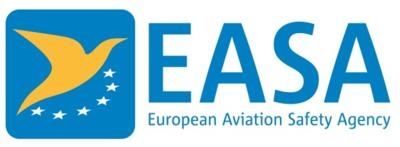Implementation Of EASA’s Simpler, Lighter And Better Rules For The GA Community Has Started To Happen
At this year’s AERO international GA fair in Friedrichshafen, Germany, EASA Certification Director Trevor Woods and his team presented the latest achievements of the GA Roadmap where milestones have been reached and implementation of many improved rules has started to happen. “The GA Roadmap project succeeded in establishing an effective cooperative spirit between EASA, stakeholders and National Aviation Authorities. A true example of Safety Together!”, he said, using the new EASA slogan for Safety Promotion activities.

Among the highlights this year are the simplified rulebook for balloon operations, Declared Training Organisations that make life easier for flying schools, and the revamp of Part-21 to simplify the certification process and the approval of organisations designing and producing light aircraft.
EASA also participated in further activities such as panel discussions and networking meetings. It was also an opportunity to meet with manufacturers and be updated on their newest products and developments. On April 18th, Trevor Woods handed over a ‘Flight Into Known Icing Supplemental Type Certificate (FIKI STC)’ for the Vulcanair P.68 to Wolfgang Grumeth, CEO of Airborne Technologies.
EASA is also working on innovative projects involving electrical propulsion, vertical take-off and landing, or air taxi operations – leading and contributing to the success of these projects and to the development and certification of new technologies. In this context, the CS-23 rules, which were rewritten in 2017, are proving to be a strong enabler.
The GA Roadmap has started initiatives for the future development of General Aviation, such as T4S - Technology for Safety. T4S introduces the concept of “Net Safety Benefit”, and looks at the operational benefits in addition to the current certification approach where we focus on mitigating risks.
In moving towards the next step of the GA Roadmap, EASA is taking a more proactive role in Safety Promotion. The slogan Safety Together! underlines that successful safety promotion of General Aviation in Europe needs to be done in close cooperation and partnership. EASA has therefore set up a GA community site where interested individuals and groups can engage, connect, discuss and share ideas. Further communication and safety promotion initiatives include the recently launched EU-wide campaign on avoiding airspace infringement, EASA’s multi-language ‘Sunny Swift’ cartoon sharing simple and good practices for GA pilots, and the Balloon Rule Book - Easy Access Rules.
This vision as well as new technologies, such as electrical propulsion, vertical take-off and landing and sharing of airspace, will also be discussed at EASA’s upcoming 2018 Annual Safety Conference in Vienna later this year (November 6th – 7th, 2018) which will focus on the future of GA.
Highlights in 2017 included the rewritten CS-23 enabling development of safe and innovative technologies, simplified maintenance rules and specifications for changes and repairs, a single set of rules for specialised operations and better access to Instrument Flying for GA pilots.
(Source: EASA news release)
 NTSB Prelim: Lee Aviation LLC JA30 SuperStol
NTSB Prelim: Lee Aviation LLC JA30 SuperStol Classic Aero-TV: Curtiss Jenny Build Wows AirVenture Crowds
Classic Aero-TV: Curtiss Jenny Build Wows AirVenture Crowds ANN's Daily Aero-Term (05.30.25): Very High Frequency (VHF)
ANN's Daily Aero-Term (05.30.25): Very High Frequency (VHF) Aero-News: Quote of the Day (05.30.25)
Aero-News: Quote of the Day (05.30.25) Classic Aero-TV: Quest Kodiak Enhances Migration Monitoring Programs
Classic Aero-TV: Quest Kodiak Enhances Migration Monitoring Programs



